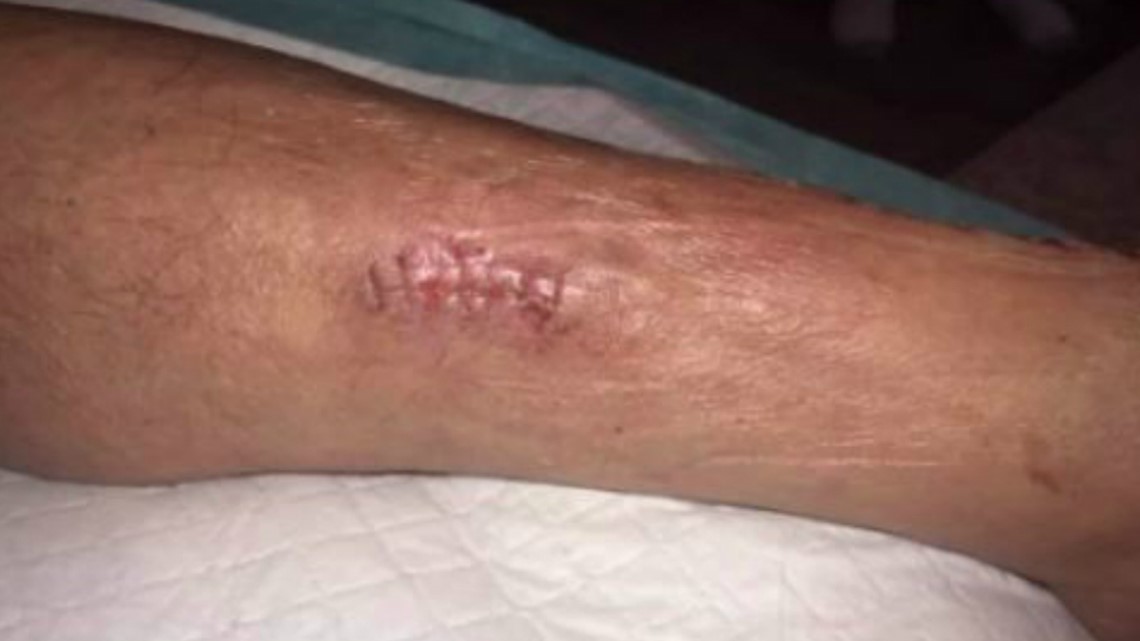Warning: Some images in this story and video may be disturbing to some. Viewer discretion is advised.
Barry Briggs of Waynesville, Ohio says he returned from a vacation in Tampa when he realized there was something strange happening with his foot. Now, he's sharing the story on his brush with a flesh-eating bacteria.
At first, he thought his foot got too much sun.
"I noticed swelling in my foot and the tops of my feet were a little red, and my first thought was sunburn," he said.
He went to bed that night but woke to see his foot wasn't getting better. He and his wife then decided to go to the hospital.
"Walked a few steps and passed out. And when I came to, she was leaning over me," Briggs said. "My blood pressure was 65/40 — not too good."
His foot had gone from red to black and his body was shutting down. It turns out the skin on his leg was dying from a bacteria called Strep A necrotizing fasciitis.


Necrotizing fasciitis is an infection that can come from numerous bacteria, one of them vibrio vulnificus, which Florida's Department of Health considers rare in the state. Doctors say it's rare, but can be fatal if left untreated.
"The whole top of my foot was black. It was coming up my shin. It was turning black about an inch an hour," Briggs said.
He says his surgeon wasn't sure if she could save his foot. After 11 days of recovery in the hospital, Brigg's foot was saved.
Surgeons had to first remove the dead skin and use the skin from his thigh to graph over the damage, allowing him to fight off the bacteria.


Briggs says he's learned a lot from the experience, including how a small wound can lead to a brush with death, which is why he has some advice for others who don't think twice about an open wound in water:
"Something like water socks, water shoes, so you know you've protected your feet from getting cut," he said.
Doctors expect him to make a full recovery. For now, Briggs is thankful they caught it in time.
Florida's Department of Health tracks vibrio vulnificus and found in 2018, there were 42 cases with nine deaths.
While the bacteria can be in any water, it prefers less salt, making it more common in Tampa Bay compared to the Gulf of Mexico. It is most common in March through December.

